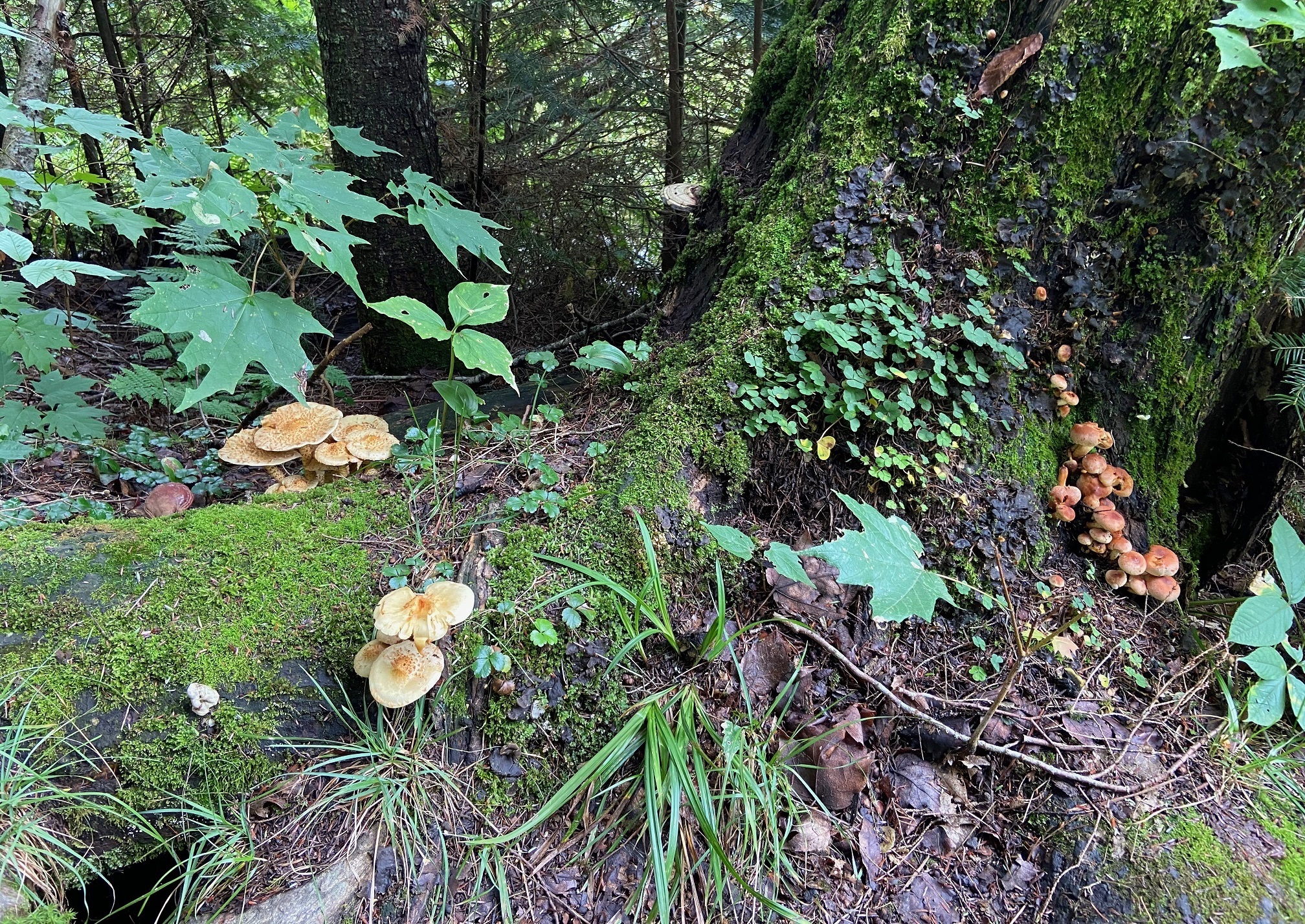
We have done work for the US, Canadian and UK governments, including defence-related applications, and specialized training on technology-based threats to personnel deployed into foreign jurisdictions. Our capabilities include pragmatics such as management of cybersecurity risks, and more exotic areas such as applications of artificial intelligence and "big-data" techniques.

We participated in a project to apply acoustic recognition technology to identify the presence of endangered woodpeckers on Army lands, where direct human population surveys could not be conducted due to dangers posed by unexploded ordnance. Speech recognition technologies were adapted to distinguish the calls of the species of interest from others in the same area.

A classical problem for tank crews was poor visibility of their surroundings, both for driving the tank and for engaging hostile forces. The need by the driver for views to the immediate sides of the tank, and by the commander and gunner to identify adversaries when they were at extreme range, often motivated crew members to emerge partially from inside the vehicle.
We demonstrated that sufficient imaging and computing power could be packaged to provide in-tank views to crew members that would eliminate the need for crew members to expose themselves to enemy fire in order to assess their tactical position.

We are contributing techniques for generating and evaluating custom integrated circuitry aimed at providing for low-power, compact implementations of neural network models for various defence use cases.
Company technical lead David Wilkes holds both advanced technical degrees in Computer Science, and is a Chartered Financial Analyst, allowing him to bridge the gap between IT and finance-oriented personnel.
We have more than a decade of experience in the financial sector covering all aspects of technology for the distressed corporate lending industry, both for sophisticated custom software, and for virtual CIO activities managing best practice operations.
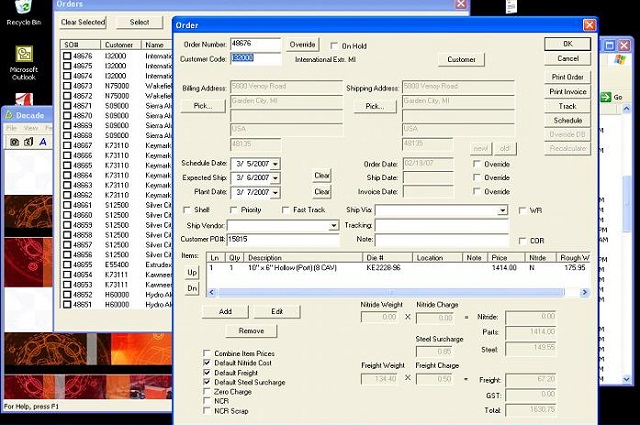
We also develop software-only projects. This software suite was an in-house production management system for a large manufacturer of extrusion dies, with three plants, serving Canada, the United States, and Spanish-speaking countries in the Americas. As well as providing standard business functions, the system provided tracking of machine costs and station-by-station production timing to optimize costs in a complex, multi-step production process, saving the company money by optimizing production and allowing more accurate pricing of their products. This particular manufacturing application led us to an interest in providing web-based software tools to allow small manufacturers access to the same, sophisticated material and cost tracking available to larger firms.

The asset-based lending industry requires daily or weekly reporting of each corporate client's collateral positions in order to determine loan availability for the client. We engineered a method for inter-company reporting allowing each company to provide the required information in the form of an excel workbook, with whatever layout they desired, then simply used an instance of the supplied workbook as a template for interpreting subsequent reports from the same company.

We have provided "Virtual CIO" services to manage computing infrastructure, reporting and cybersecurity for a private capital company through its IPO, in support of the needs of a newly-public company for 24/7 assured access to its public disclosures, with a geographically-distributed failover capability for rapid recovery in case of failures of the local electrical grid.
We have a long history of energy-related projects. As well as those featured here, our projects include:
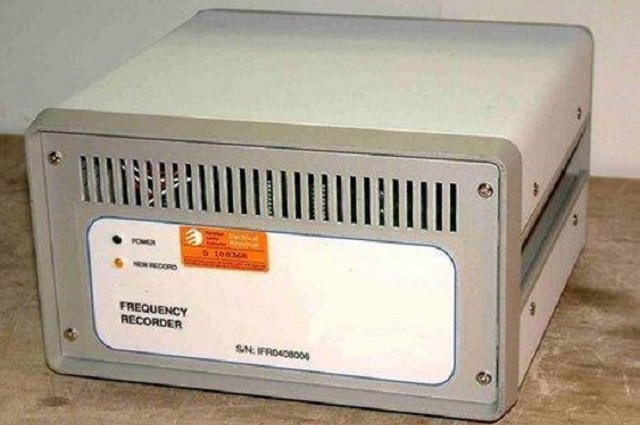
We developed a high-precision power line frequency monitor, pictured here. This high-precision diagnostic tool recorded the minor fluctuations in the frequency of the North American power grid, as generators were brought online and large industrial electrical loads were switched on and off.
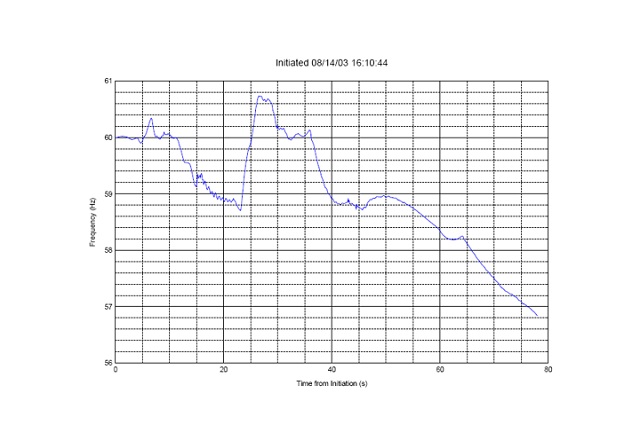
The recording shown is the frequency record taken at our lab on the day of the major power failure in August of 2003. This record was the only one of its kind in Canada, and was instrumental in helping to reconstruct the sequence of events during the failure of the power grid. Each peak and valley corresponds to major switching event as the grid tried to cope with a cascade of failures in the power system.
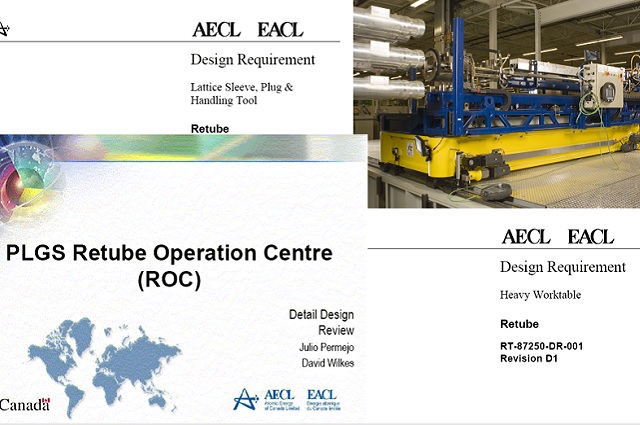
We produced the control systems design documents for the highly complex, custom systems being used for the refurbishment of nuclear reactors in New Brunswick and Korea. One such tool is shown mounted on its yellow positioning table and 40-tonne work platform. We also prototyped the camera-based automatic homing system, for the positioning table, allowing the multi-ton tools to dock gently with individual reactor components. We were also involved in the specification and design of the Retube Operations Centre, an 800 square foot mobile building used to manage the Retube tools.

Additional nuclear applications have been of increasing strategic significance. The photograph shows high-performance ultrasound hardware developed by us for Ontario Power Generation, that controls, reports position and timestamps ultrasonic data from multiple probes inspecting reactor fuel channels. This is a typical instrumentation design, requiring a quick turnaround of custom digital hardware, from requirements through layout, assembly, firmware and testing.
We also have a long history in AI and robotics, begining at the AI lab at the University of Toronto, and have seen various techniques in Artificial Intellgence wax and wane in popularity over the years. With each new wave of AI research, a number of new applications emerge successfully, and a number disappoint, as certain aspects of our "natural intelligence" prove to remain the better solution for a particular problem - at least for the present.
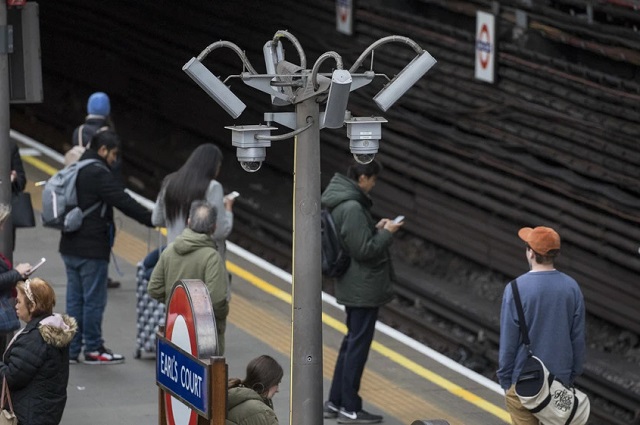
We delivered portions of a Ubiquitous Technical Surveillance course concerned with the application of AI techniques to surveillance datasets, to provide awareness of issues affecting allied operatives in the performance of their missions.
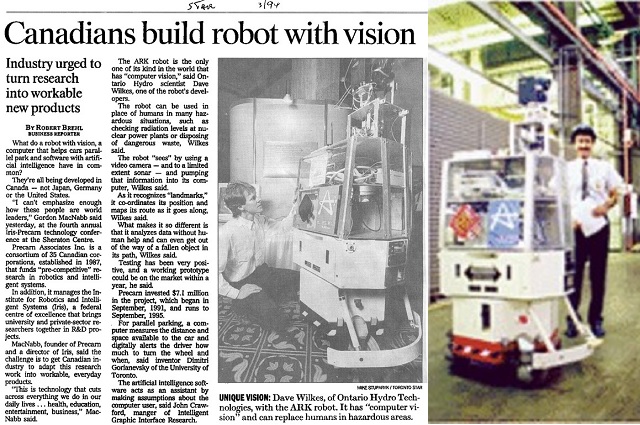
We produced the laser- and vision-based path-planning and navigation software for the ARK robot project, allowing the robot to plan its own motion and move precisely from point to point within the facility, using onboard sensors to avoid collisions with unexpected obstacles, and correct its own position to an accuracy of 1 cm, anywhere within the test facility. We developed a novel technique for navigation, in which the robot updated the accuracy of its position by finding and ranging natural landmarks as it moved, allowing the 2-metre tall, 100kg robot to slip through doorways barely 2cm wider than the robot itself. The ARK robot technology and software were subsequently used by one of the industrial partners for the remotely operated decommissioning of a radioactive work cell at Chalk River laboratories.
Our technical lead David Wilkes's PhD work concerned object recognition in which the robot would use low-level image data to move its camera to better viewpoints from which to recognize an unknown object.
The work also explored efficient means to index the large datasets required for recognition of real-world objects, and analyzed how camera resolution limits can render certain viewpoints on an object unusable for recognition, due to ambiguity in object identity brought about by being at a so-called "degenerate view."
We maintain an ongoing commitment to the fields of education and health.
One of our co-owners was the founder of a private elementary school, and the other was an award-winning lecturer in Computer Science at the University of Toronto, with over 30 academic publications, and over 1200 citations.
We produced the firmware and software for a hospital medication system designed to reduce medication errors in large hospitals.
The two disciplines come together at EESI in software written in support of a co-owner's nutritional education channel and blog site, that calculates macro- and micronutrient content for channel recipes, using the USDA nutrient database, among other sources, for raw ingredient data.
The software used on the channel helps to educate on the nutritional value of a healthy diet, addressing various inflammatory and metabolic issues, especially type 2 diabetes.
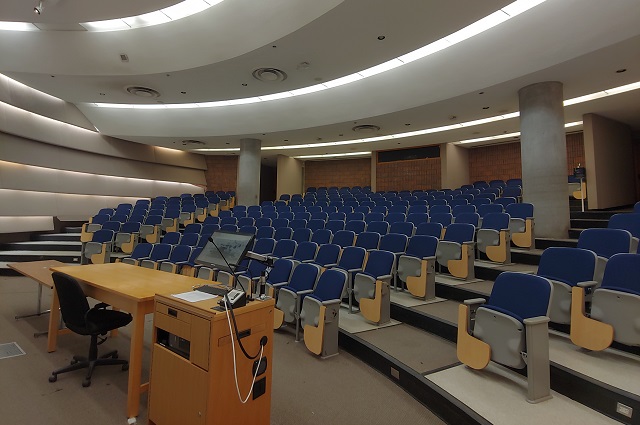
Our technical lead, David Wilkes, is a past lecturer for several undergraduate computer science courses at the University of Toronto, including both introductory and higher-level courses. He was a three time winner of the department's teaching award.
Courses that David taught included: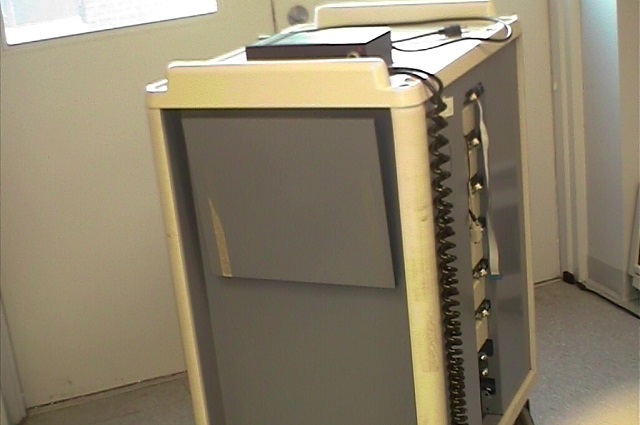
We produced the controller logic for the three control systems required to run this hospital patient medication cart, part of an end-to-end computerized system designed to reduce medication errors in hospitals, by addressing each potential source of error, from prescription through the pharmacy, to the ward medication rounds. The cart is wheeled from room to room. The barcode on a patient’s wristband prompts the system to open automatically the correct drawer and bin of the cart for the patient’s prescribed medication. Barcoding of the individual medications confirms that they are a match for the current patient and delivery time. Security features protect narcotic medications from tampering. We worked closely with the startup company that commissioned the product for two years, having at least one full-time staff member devoted to the development effort throughout the period. The startup was successfully sold into a large healthcare conglomerate.
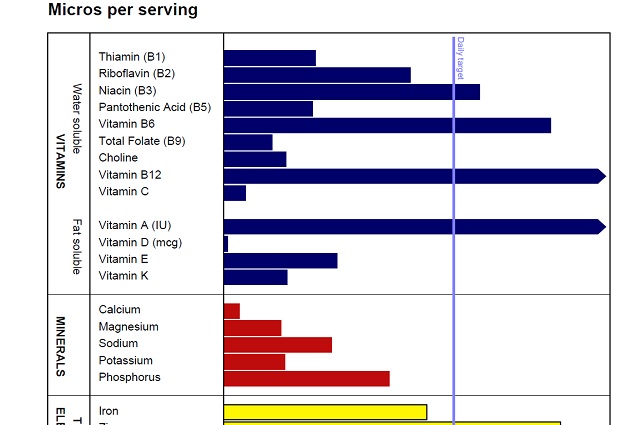
In support of a co-owner's YouTube channel concerned with nutrition and healthy eating, we have written software to calculate both the macronutrient content (fat, protein, carbohydrates, fibre) and micronutrient content (vitamins and minerals, relative to estimated daily requirements) for recipes composed of whole food ingredients.
The work quantifies these key nutritional elements, in an effort to allow users better control over the effects of what they eat on their personal health.
Main Office & Lab800 Teston RoadMaple, ON, L6A 1E9 Canada |
|
+1 416 553-6850(confidential voice mail) |
|
wilkes@wilkesassociates.com |

David Wilkes’ interests evolved from pure research into increasingly commercial pursuits as he came to regard the market as the best validation of the utility of a given technical project. Although many high tech projects are interesting in their own right, David is motivated by a desire to design for practical needs, which led to the founding of Wilkes Associates Inc., and then its federally-incorporated successor company Embedded Enterprise Systems Inc.
Wilkes obtained Master’s and PhD degrees in Computer Science from the University of Toronto, specializing in systems, computer sensing and robotics. During his time at the university, he was a lecturer for a broad spectrum of introductory courses, and advanced systems courses, to computer science, computer engineering and engineering science specialists. David won the departmental teaching award three times during his time at the university, and was author and co-author of over 30 refereed publications, with over 1200 citations.As part of learning to interact with financial industry clients, David became a CFA charterholdeer in 2019.